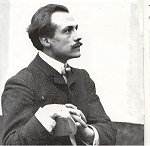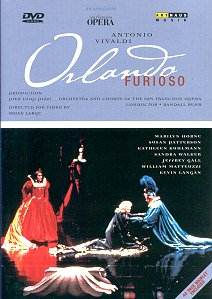 Composer: Jean Cras
Composer: Jean Cras
Works: Journal de Bord, Âmes d’enfants, Légende for cello and orchestra, Piano Concerto, Danze, Paysages, Poèmes Intimes
Performers: Henri Demarquette (cello), Alain Jacquon (piano), Orchestre Philharmonique du Luxembourg, Jean-François Antonioli
Recording: Luxembourg, July/Sept 1996; Théâtre de Poissy, 16-17 Oct 1995
Label: Timpani
Jean Cras, a notable figure in early 20th-century French music, managed to carve a unique niche within the realm of orchestral and piano compositions despite the constraints of a naval career that kept him away from the concert hall. His works, while not voluminous, exude a distinctive character shaped by his Breton heritage and his profound connection to the sea. The current two-disc set from Timpani presents a rich tapestry of Cras’s orchestral and piano music, revealing both the romanticism and the impressionistic qualities that define his style.
The orchestral pieces, particularly “Journal de Bord,” resonate with the spirit of adventure and reflection, mirroring the life of a naval officer. The structure of this piece, divided into three movements representing different watches at sea, evokes vivid imagery of the maritime experience. The orchestration is particularly commendable; the opening movement showcases a bronze-like texture that is reminiscent of Debussy’s “La Mer,” yet it possesses its own distinct maritime identity. The middle movement’s portrayal of moonlight dancing on waves is both ethereal and nuanced, while the concluding movement’s buoyancy encapsulates the joys of a sailor’s life. Jean-François Antonioli leads the Orchestre Philharmonique du Luxembourg with a deft hand, ensuring that the dynamic contrasts are articulated with clarity, allowing the intricate orchestral colors to emerge.
In “Âmes d’enfants,” Cras’s dedication to his daughters translates into a lyrical exploration of childhood. The first movement, “Pures,” unfolds with a deeply romantic theme that lingers in the air, beautifully realized by the strings. The playful character of “Naïves” offers a delightful contrast, evoking the innocence and spontaneity of youth, resembling Sibelius’s lighter musette movements. The finale, “Mystérieuses,” while satisfying, hints at an untapped potential for deeper emotional resonance that might have elevated the work further. Here, the conductor’s choices, while generally effective, could have embraced a more expansive interpretation to fully exploit Cras’s lyrical gifts.
The “Légende for cello and orchestra” stands out for its evocative portrayal of Breton folklore, weaving a narrative that is both grand and intimate. Demarquette’s performance is particularly striking, his cello voice rich and expressive, capturing the work’s emotional spectrum from solemnity to exuberance. The orchestral accompaniment is equally responsive, with lush brass and woodwinds providing a robust backdrop. The work’s structure, characterized by its episodic nature, recalls the folk-inspired works of Arnold Bax, though Cras’s idiom remains distinctively his own, avoiding sentimentality while embracing a sense of the mythical.
Cras’s piano compositions, including “Danze” and “Poèmes Intimes,” showcase his lyrical pianism and harmonic inventiveness. Alain Jacquon’s interpretations are marked by a delicate touch and an understanding of the subtle textures within the music. “Danze” contrasts rich, bell-like sonorities with playful rhythmic gestures, reminding one of Satie’s ethereal qualities. The movements of “Paysages” evoke a picturesque sound world, with “Maritime” transporting listeners to a serene coastal landscape filled with Roussel-like exoticism. The central “En Islande” from “Poèmes Intimes” serves as a poignant reflection on the sea, characterized by its Debussian harmonies, which Jacquon executes with a tender intensity that resonates deeply.
The recording quality throughout this set is exemplary, with an acoustic that captures the vibrant orchestral textures and the intimate nuances of the piano works. The engineering provides clarity, ensuring that each instrument’s voice is distinct while maintaining a cohesive ensemble sound. This level of detail allows listeners to appreciate the intricate interplay of melodies and harmonies that Cras so masterfully constructs.
This collection stands as a significant contribution to the understanding of early 20th-century French music and the legacy of Jean Cras. It not only highlights his unique voice but also his connection to the maritime landscape that shaped his artistic sensibilities. For those interested in the broader spectrum of French impressionism and the Celtic influence in music, these recordings present an invaluable opportunity to explore Cras’s oeuvre. The performances, led by an enthusiastic ensemble and a sensitive pianist, breathe life into works that have long awaited their due recognition, making this release an essential addition to any discerning listener’s collection.



